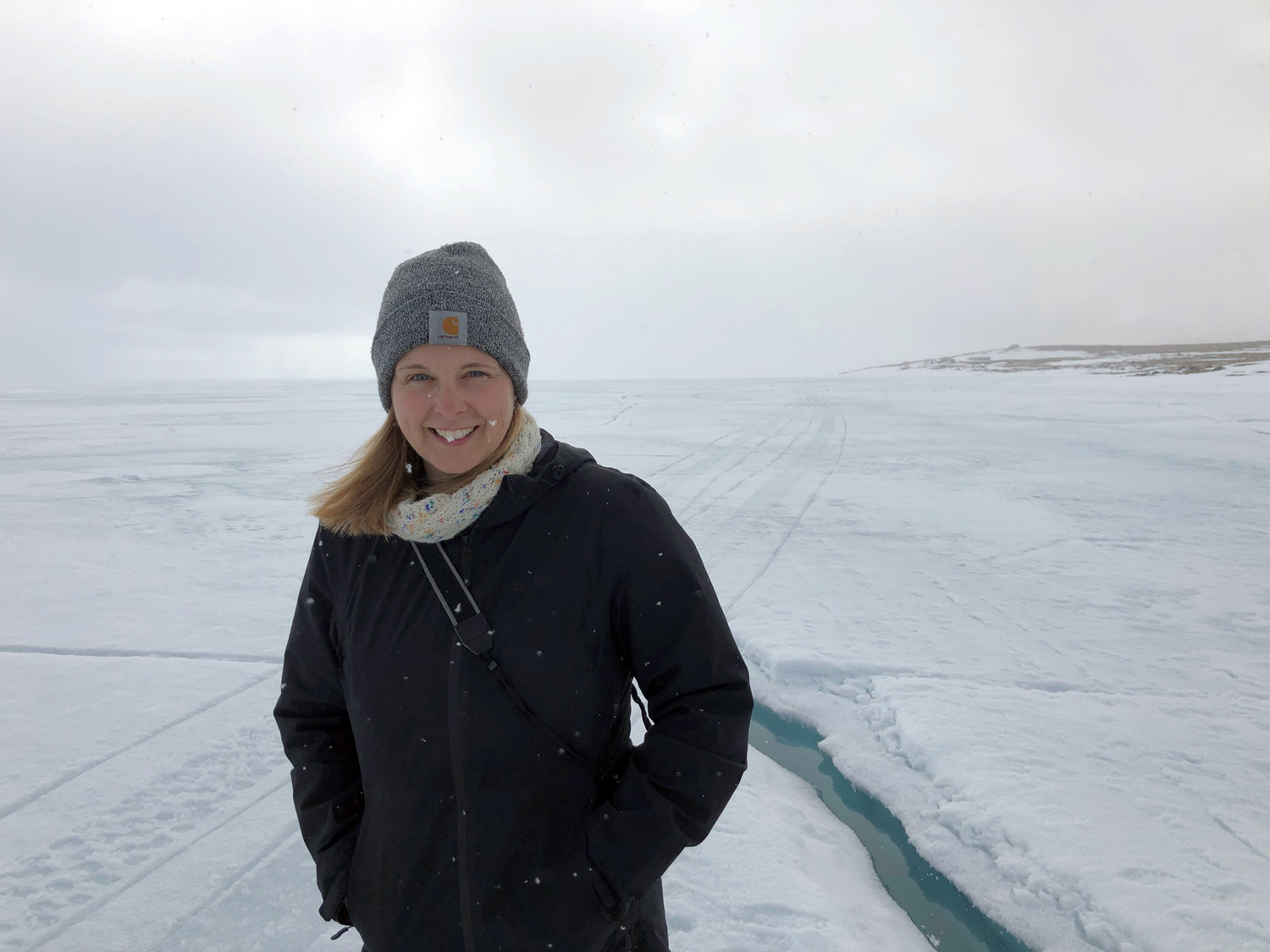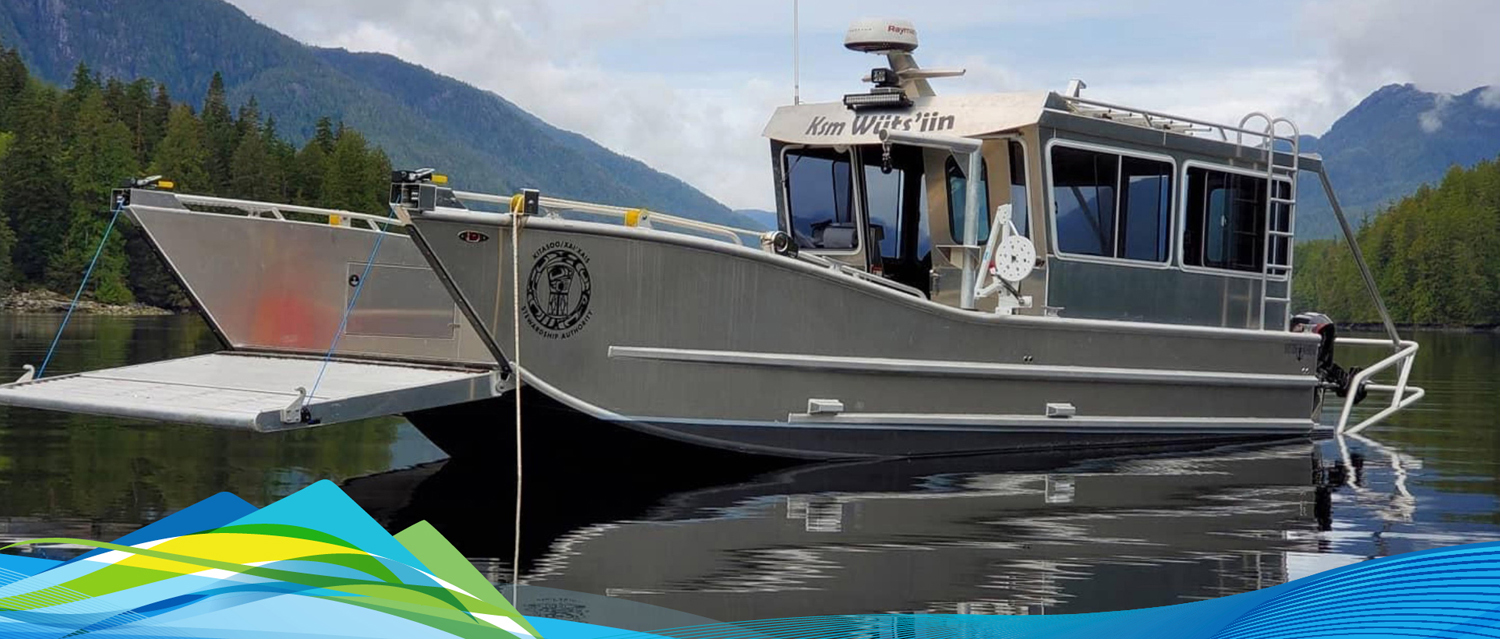Thousands trained in marine emergency response
When marine incidents occur, you can count on Transport Canada’s Incident Management Team to answer the call.
Employees like Cory Toews work closely with the Incident Management System, which plays a critical role in strengthening Canada’s response to marine incidents.
How does Cory and his team prepare for emergency situations on the water? The key is to train, train, and train some more. Like many of his colleagues, Cory regularly participates in Incident Management System training and exercises. Most recently, his team delivered an exercise involving response to a sealift vessel that ran aground in the Canadian Arctic.
According to Cory, "developing a robust Incident Management System helps us focus on essential elements of emergency response like safety, engaging with Indigenous and coastal communities, and following up with appropriate enforcement."
The Incident Management System is funded under the Oceans Protection Plan. Since the Plan launched, over 4,500 staff have been trained in this internationally-recognized system to help people respond faster and more effectively to marine incidents.
Learn more about how the Oceans Protection Plan is strengthening Canada’s response to marine incidents.
Stories from our coasts
"My job is to help build a better understanding of the effects of vessel traffic on coastal environments and the people who live, work, and play on or around them. One of the most rewarding things is being able to spend time with our Indigenous partners. I love learning about the ways they live, work, and see the world."
As part of the Oceans Protection Plan team, Paula Doucette and her team partner with Indigenous Peoples to assess the cumulative effects of marine shipping on our coasts. She is working on assessments in the South and North Coast of British Columbia and in the Cambridge Bay area of Nunavut along the Northwest Passage. This involves working with Indigenous Peoples to develop assessments tailored to their priorities and with colleagues across departments and levels of government.
"My favourite experience has been working with our Inuit partners through the Hunters and Trappers Organization in Cambridge Bay, Nunavut. Having them welcome us into their community was truly humbling and will stay with me for a very long time."
Do you have an OPP story to share? Email us at TC.OPPEngagement-MobilisationPPO.TC@tc.gc.ca
Follow the 'Voyage of a Vessel' through Canadian Waters
Did you know that the Government of Canada’s marine safety system works to protect Canadian waters four days before a ship enters Canada?
From there, our world-class safety system of communication, surveillance, partnerships, and response protects our oceans and waterways from risks like oil spills and invasive species.
The Ocean Protection Plan’s Community Engagement and Partnerships team, in collaboration with HyperActive Productions, has produced Voyage of the Vessel, a series of videos that tell the story of marine shipping for five regions in Canada: Arctic, Atlantic, Pacific North and South Coasts, and the Great Lakes and the Gulf of St-Lawrence River.
Each video has a unique script and footage to showcase regionally specific information, as well as a local Transport Canada spokesperson.
Check out the Voyage of the Vessel videos, which are available in English, French, and with Inuktitut subtitles, and share them on your social media channels!
Oceans Protection Plan holds tenth Dialogue Forum—largest to date
The tenth Oceans Protection Plan Dialogue Forum, held online due to COVID-19 in February, drew the largest number of registrants to date, with more than 400 people participating.
People came from a range of sectors, representing almost 150 organizations and groups from all levels of government, Indigenous and coastal communities, not-for-profits, academia, and the shipping industry.
To mark the fifth anniversary of the Oceans Protection Plan, the event focused on lessons learned and achievements. Twenty sessions were offered ranging from technical information briefs and workshops, to panel discussions. A few examples include:
- a panel discussion on Transport Canada’s partnership with the First Nations Fisheries Council to deliver the Oceans Protection Plan in the South Coast of British Columbia
- a workshop on lessons learned from Enhanced Maritime Situational Awareness by the Council of Haida Nation, the Nunatsiavut Government, and Transport Canada
- a presentation on current and alternative measures for oil spill response under the Multi-Partner Research Initiative Program by scientists with Fisheries and Oceans Canada
The Forum concluded with a keynote speech from the Honourable Omar Alghabra, Minister of Transport, who spoke about Oceans Protection Plan renewal and reflected on the importance of building strong partnerships to strengthen marine safety and protect marine ecosystems.
West Coast Indigenous communities receive new marine safety boats
Coastal First Nations have a long history of responding to marine emergencies. They also hold extensive knowledge of the local waters in their traditional territories. To support their ability to respond to marine emergencies, the Quatsino and Kitasoo Xai'xais First Nations of coastal British Columbia celebrated the arrival of two dedicated response vessels in February.
The Quatsino First Nation’s new response vessel, the Quatsino Spirit, is a 27-foot vessel capable of cruising at 44.5 knots. It’s already in service, with members of the Coastal Nations Coast Guard Auxiliary from the Quatsino First Nation recently participating in two Canadian Coast Guard search and rescue training exercises.
The Kitasoo Xai'xais Nation is supporting search and rescue in the waters around the Great Bear Rainforest with their new response vessel, the Ksm Wutsi'in (Mousewoman), a 30-foot vessel capable of cruising at 25 knots.
Funding for the boats was provided by the Canadian Coast Guard under the Oceans Protection Plan’s Indigenous Community Boat Volunteer Program. Combined with training in search and rescue, the Program provides funding for boats and related safety equipment. This supports Indigenous communities’ membership in the Canadian Coast Guard Auxiliary and makes the waters safer for everyone. Since 2017, 35 Indigenous coastal communities have received over $10 million in funding.
Turning research into response advice to protect marine birds
Millions of marine birds rely on Canada’s Pacific waters. Under the Oceans Protection Plan, Environment and Climate Change Canada (ECCC) conducted research on how these birds use habitat in British Columbia, from Haida Gwaii to southern Vancouver Island.
ECCC collected baseline data on marine bird populations by conducting over 1,200 kilometres of at-sea marine bird surveys. They also studied birds tagged at colonies using advanced tracking technology.
This information helps the Government of Canada identify key marine bird habitats, guide emergency response advice, and understand the risks these birds face from human activities such as marine shipping.
ECCC’s Wildlife Emergency Response Coordinator uses this information when providing advice on potential wildlife impacts from a marine incident. For example, during the response operations from December 2020 to July 2021, for the Bligh Island shipwreck on Vancouver Island, having up-to-date and seasonal data on local bird populations was essential in assessing the shipwreck’s potential risk to marine birds.
We want to hear from you!
As part of the Ocean Protection Plan, Transport Canada intends to propose amendments to the Canada Shipping Act, 2001, including to enable the proactive management of marine emergencies and to cover more types of pollution. We invite you to read the discussion paper, which outlines four key areas where changes are being considered:
- Enhanced marine emergency management
- Preparedness and response to marine incidents involving Hazardous and Noxious Substances
- Increasing regulatory responsiveness
- Strengthened compliance and enforcement
Comments on this discussion paper may be sent to: tc.opplegis-legisppo.tc@tc.gc.ca
Latest announcements
- The Government of Canada invests in marine safety as part of the next phase of the Oceans Protection Plan (July 26, 2022)
- The Government of Canada invests in the protection and restoration of marine ecosystems as part of the next phase of the Oceans Protection Plan (July 25, 2022)
- Delivering clean oceans and healthy coasts with an expanded Oceans Protection Plan (July 19, 2022)
Upcoming events and consultations
To subscribe or change your subscription to this newsletter, please visit the Oceans Protection Plan newsletter page on our website.





